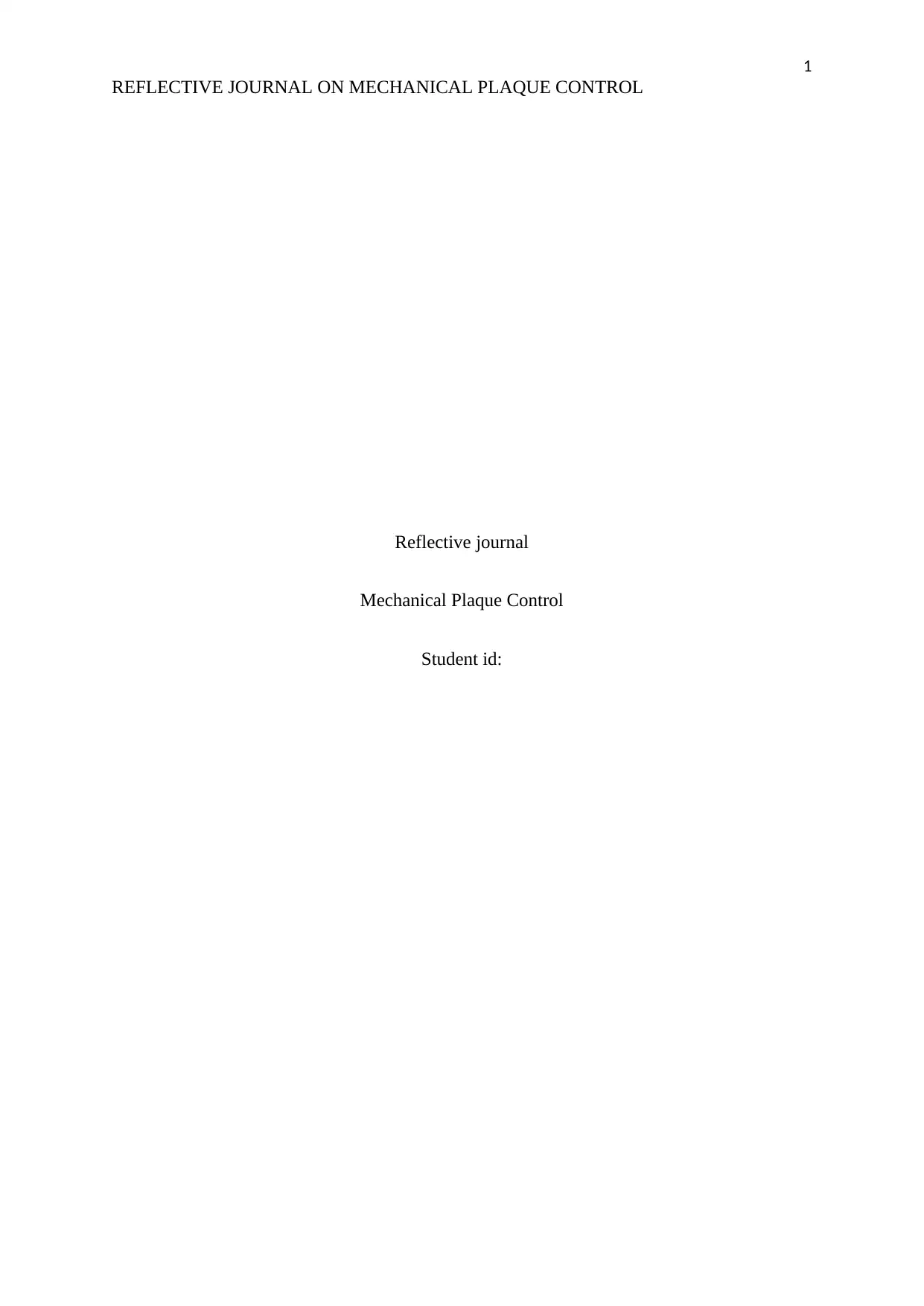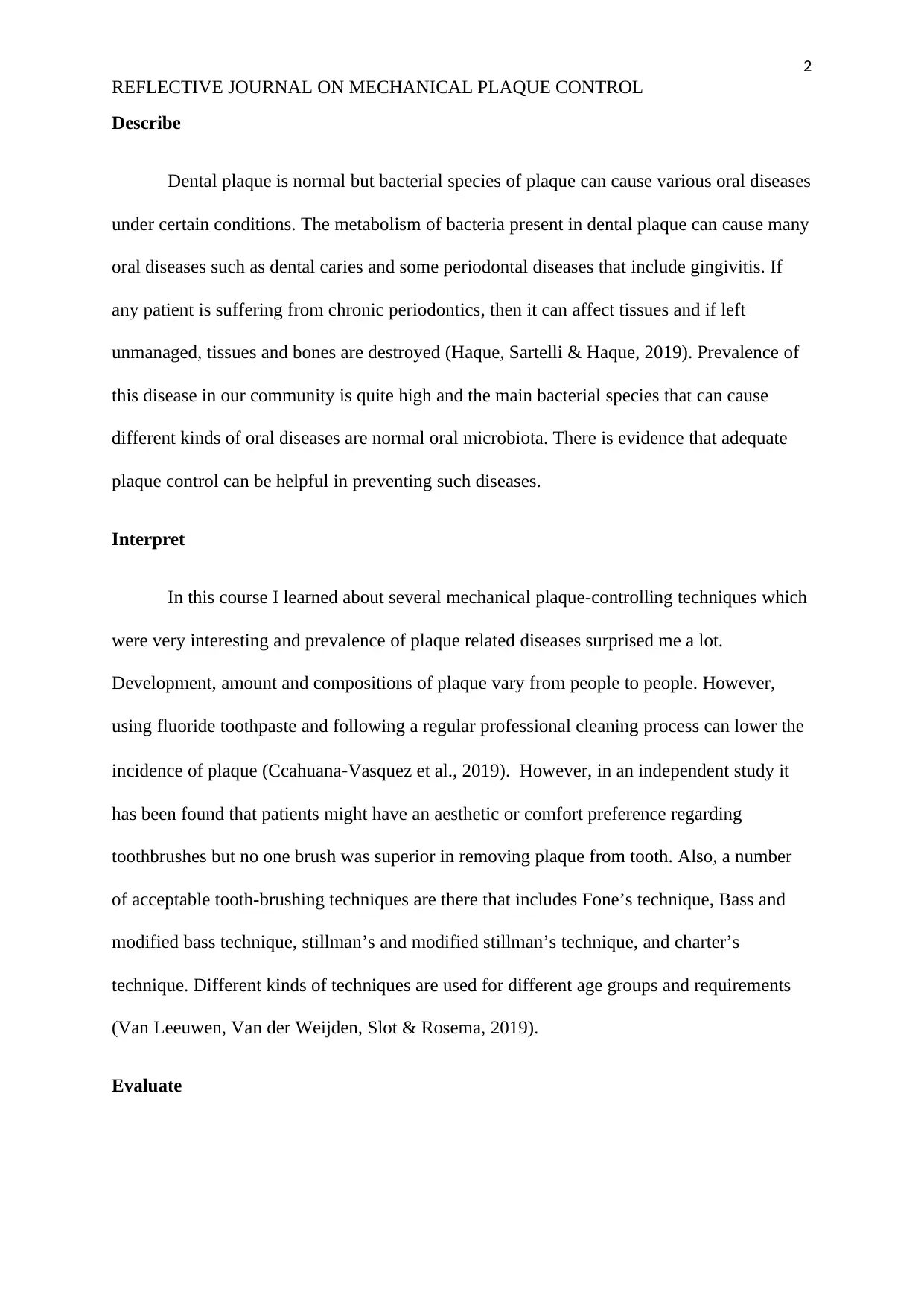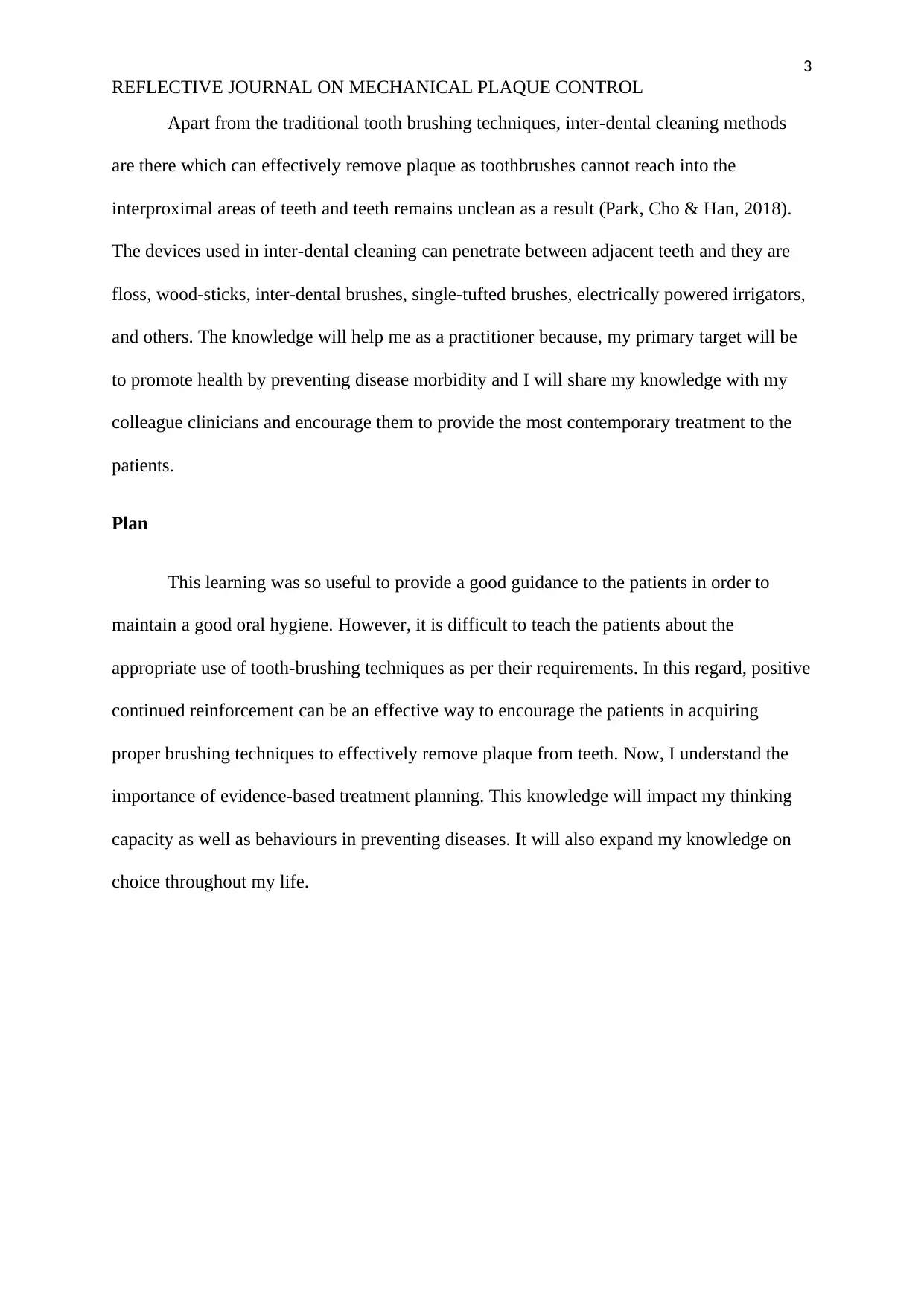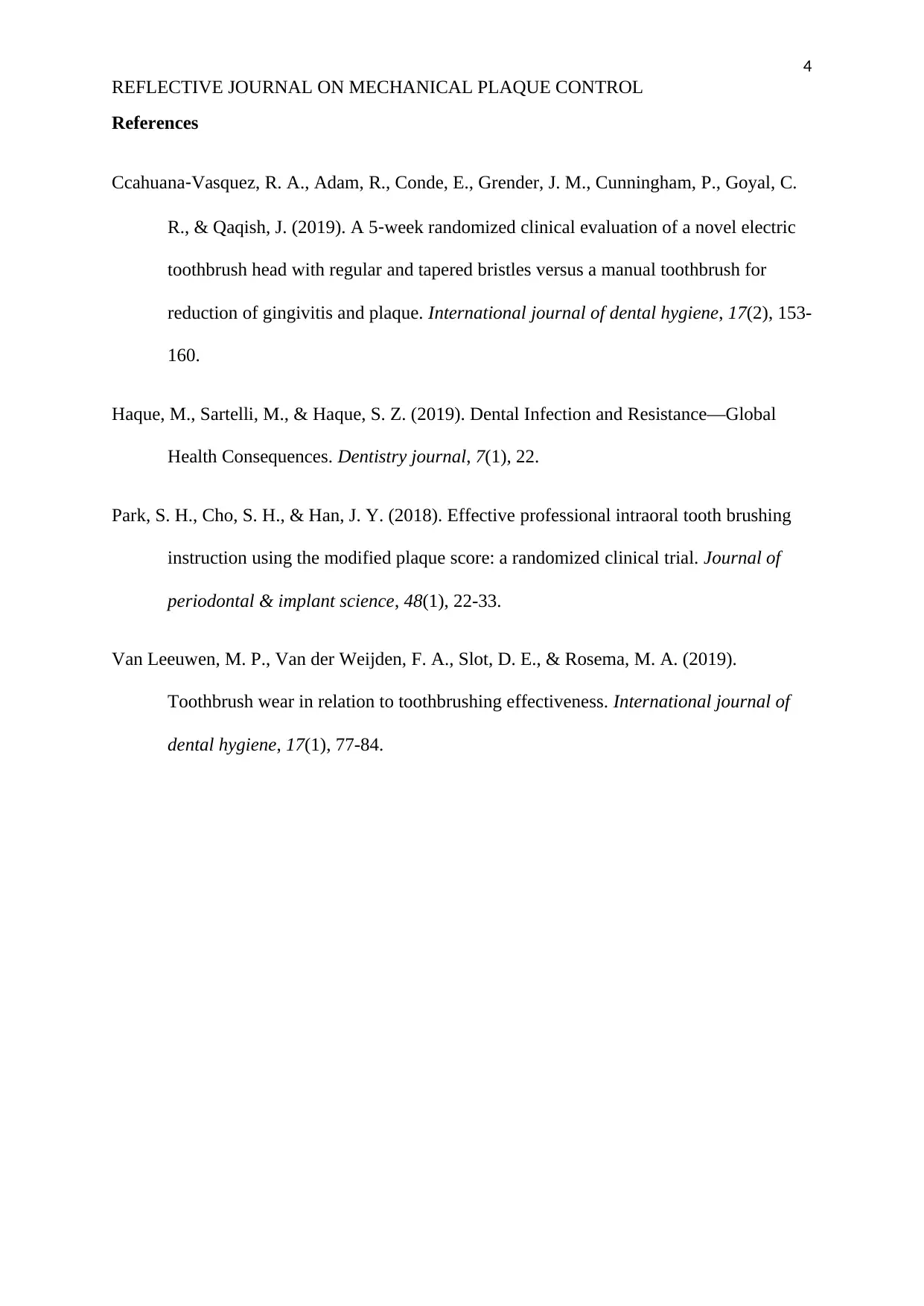ORAL10003 Reflective Learning Journal: Mechanical Plaque Control
VerifiedAdded on 2023/03/31
|4
|626
|460
Journal and Reflective Writing
AI Summary
This reflective journal explores mechanical plaque control techniques, emphasizing their importance in preventing oral diseases like dental caries and periodontal disease. The journal discusses various toothbrushing methods, interdental cleaning techniques (floss, inter-dental brushes), and the significance of patient education in maintaining good oral hygiene. It highlights the impact of plaque control on overall oral health and reflects on the learning experience, connecting it to clinical practice and future professional development. The student emphasizes the importance of evidence-based treatment planning and continued reinforcement to encourage patients in acquiring proper brushing techniques for effective plaque removal. The assignment solution is available on Desklib, a platform offering a wide range of study resources for students.
1 out of 4











![[object Object]](/_next/static/media/star-bottom.7253800d.svg)